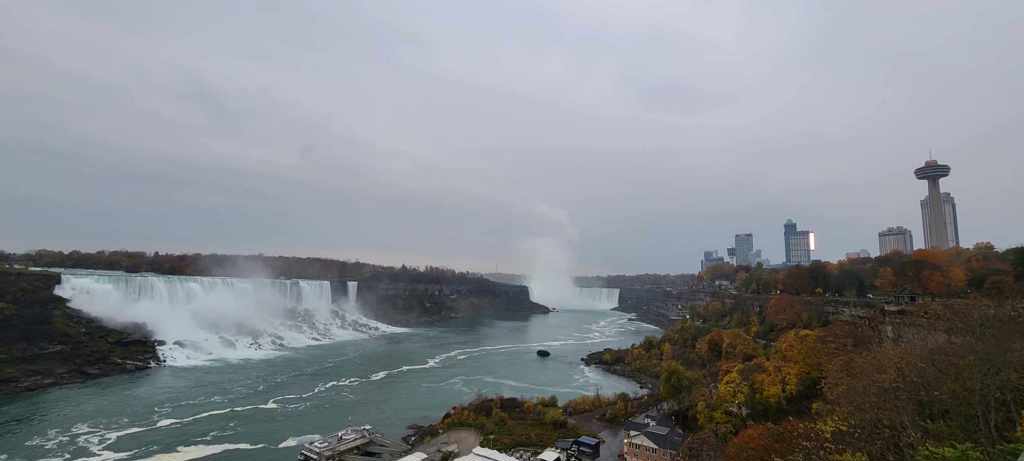The FBI is investigating an incident that occurred on Wednesday, Nov. 22, where a vehicle heading toward Canada from the US crashed and exploded on the Rainbow Bridge.
Between 11:20 and 11:30 a.m., a vehicle accelerated toward the Rainbow Bridge on the U.S. side before colliding with a checkpoint structure. Upon collision, the vehicle caught fire and exploded. The smoke from the blast could be seen from several kilometres away.
An initial search of the vehicle found no incendiary or explosive devices. Law enforcement noted that this was only preliminary information.
The cause of the explosion is still being investigated.
Officials have confirmed that the two passengers of the vehicle died during the explosion. The single border patrol guard inside the checkpoint at the time of the crash was sent to the hospital with minor injuries.
It is unknown at this time whether there were more casualties or injuries as a result of the collision and explosion.
Mike Guenther from Kitchener witnessed the incident while walking down Main Street in Niagara Falls, New York with his wife. In an interview with WGRZ-TV, Guenther reports that the car accelerated “so fast we could barely even see them… they were fishtailing because they were going so fast.” The vehicle then swerved to avoid hitting another car and hit a fence around the checkpoint said Guenther.
CCTV footage reveals that the fence acted as a ramp, propelling the vehicle into the air before hitting the checkpoint. According to Guenther, the vehicle was then quickly engulfed in “a ball of fire, 30 [or] 40 feet high.”
Video from another CCTV camera at the Rainbow Bridge displays a large fiery explosion that scorched the US border checkpoint followed by a scattering of debris. According to the security camera’s data, the incident happened at 11:22 a.m.
Images taken at the crash show similar wreckage, warped metal and open flames covering the road around the bridge.
The FBI is coordinating with local, state and federal authorities to investigate the cause of the crash. Whether the crash and explosion were intentional or not is currently unconfirmed.
The explosion prompted the closing of the Rainbow Bridge as well as three other border crossings in the region, including the Queenston-Lewiston Bridge, the Peace Bridge and the Whirlpool Bridge
The Buffalo and Niagara Falls airports, however, remain operational.
A statement from the Niagara Frontier Transportation Authority says that “cars coming into the Buffalo Airport will undergo security checks and travellers can expect additional screenings.”
Prime Minister Justin Trudeau made a statement in Parliament, saying “this is obviously a very serious situation in Niagara Falls.” He eventually excused himself from Question Period in the House of Commons to be briefed further.
The Prime Minister went on to say that “additional measures” were being contemplated and activated additional border crossings across Canada.
New York Gov. Kathy Hochul has been briefed on the situation and said via X, formerly Twitter, that “the New York State Police will be actively working with the FBI’s Joint Terrorism Task Force to monitor all points of entry into the state.”
In a press statement at Niagara Falls, New York, Gov. Hochul stated, “there is no evidence at this time that this was a terrorist activity,” and that the car explosion incident was caused by a “local individual, a West New Yorker.”
The situation is still evolving as more information comes to light.

